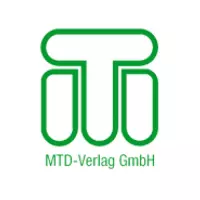(02/2023) The WifOR Institute has prepared the sustainability study "SEE Impact Study of the German Medtech Industry" on behalf of the BVMed Institute. The focus of the study is the social, economic and ecological footprint of the medtech industry. BVMed CEO Dr. Meinrad Lugan sees the study as a "first good assessment of the situation". It makes it clear that external effects in the environmental and social area primarily occur in the indirect supply chain.
The economic activity of the German MedTech industry is associated with ecological effects. In the SEE Impact Study, the ecological footprint was quantified using the indicators greenhouse gases, air pollution, waste and water consumption. These key figures were calculated for the year 2020 for Germany, the supply chains in Germany and global supply chains (so-called upstream).
ecological factorsOverall, the economic activity of the German medtech industry was associated with the emission of 8.9 million tons of greenhouse gases. More than 60 percent of these greenhouse gas emissions (5.5 million tons) are created indirectly in the global supply chain of the medtech industry. Of these 5.5 million tons, by far the most greenhouse gases are emitted in China, at 1.2 million tons.
The economic activity of the medtech industry goes global with air pollution by so-called fine dust i. hv 2,953 tons. Almost 90 percent of air pollution is also emitted here in the global supply chain. The economic activity of the medical technology sector is less closely associated with the generation of particulate matter than other sectors such as vehicle construction or mechanical engineering.
The economic activity of the medtech industry in Germany causes a total of around 1.8 million tons of waste - more than 80 percent in the global supply chain. In a sector comparison, the gate-to-gate medtech sector has a low volume of waste at 56 tons per EUR 1 million output in 2020.
The key figure for water consumption shows in particular the ability to connect to the SDGs (Sustainable Development Goals). The economic activities of the medtech industry in Germany are associated with a total water consumption of 61.2 million m³. Of this, 53.4 million m³ are used indirectly in the global supply chain (approx. 87%). Here, too, the hotspot analysis makes it possible to determine the country in the global supply chain with the highest water consumption. China was the leader here in 2020 with 15.7 million m³.
About the methodology of the study
The methodology of the SEE Impact Study is based, among other things, on the goods-related delimitation of the medical technology sector according to the health-economical accounts of the Federal Ministry for Economic Affairs and Climate Protection (BMWK). It is also consistent with the work for the WHO and the G20 and also enables a coherent industry comparison for the year 2020. In addition, the study is committed to the dual materiality approach, i.e. the recording of social and ecological impacts of business activities in the global supply chain. This methodology is also set as a standard by the "Value Balancing Alliance" and is empirically recorded for the first time in the SEE Impact Study for an industry.
The WifOR Institute calculated 5 indicators for the economic footprint of the German MedTech industry for the years 2012 to 2021. The most important key figures for the economic dimension are gross value added, employment, export and import activities as well as research and development in the industry.
social factorsThe SEE Impact Study determines the social footprint using the three indicators “work-related illnesses”, “accidents” and “child labour”. These key figures were calculated for the year 2020 for Germany, the supply chains in Germany and global supply chains (upstream).
In the context of cases of occupational diseases, the economic activity of the medtech industry is associated with a total of more than 20,000 cases, of which 7,300 cases directly at the production sites in Germany and more than 10,000 cases in the global supply chain. In a sector comparison, the MedTech sector is in the middle.
In 2020, the economic activity of the medtech industry is associated with 23,900 work-related accidents. 62 percent, or approximately 15,000 cases, are in the global supply chain; also here was China than there









